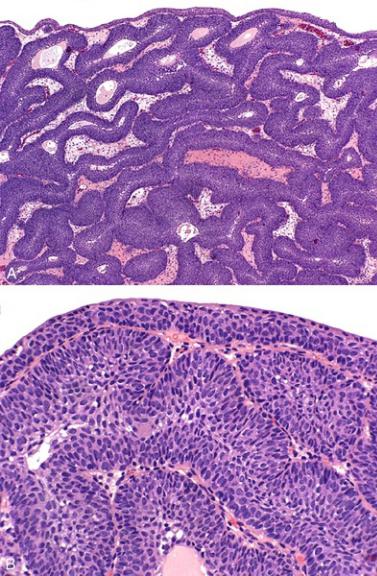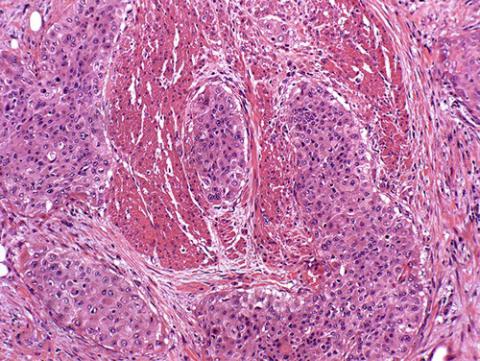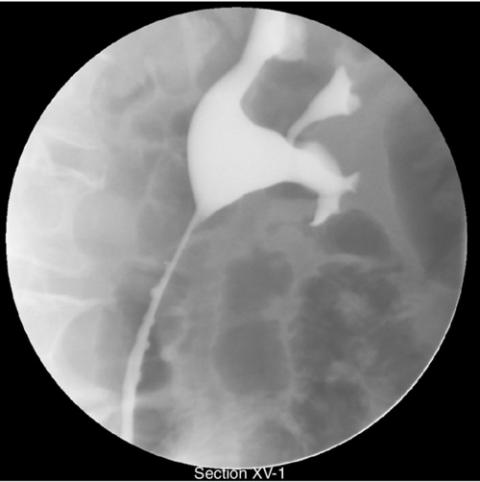
- •Table of Contents
- •Copyright
- •Contributors
- •How to Use this Study Guide
- •Questions
- •Answers
- •Questions
- •Answers
- •Questions
- •Answers
- •4: Outcomes Research
- •Questions
- •Answers
- •5: Core Principles of Perioperative Care
- •Questions
- •Answers
- •Questions
- •Answers
- •7: Principles of Urologic Endoscopy
- •Questions
- •Answers
- •8: Percutaneous Approaches to the Upper Urinary Tract Collecting System
- •Questions
- •Answers
- •Questions
- •Answers
- •Questions
- •Answers
- •Questions
- •Answers
- •12: Infections of the Urinary Tract
- •Questions
- •Answers
- •Questions
- •Answers
- •Questions
- •Answers
- •15: Sexually Transmitted Diseases
- •Questions
- •Answers
- •Questions
- •Answers
- •Questions
- •Answers
- •Questions
- •Answers
- •Questions
- •Answers
- •20: Principles of Tissue Engineering
- •Questions
- •Answers
- •Questions
- •Answers
- •22: Male Reproductive Physiology
- •Questions
- •Answers
- •Questions
- •Answers
- •24: Male Infertility
- •Questions
- •Answers
- •Questions
- •Answers
- •Questions
- •Answers
- •Questions
- •Answers
- •28: Priapism
- •Questions
- •Answers
- •Questions
- •Answers
- •30: Surgery for Erectile Dysfunction
- •Questions
- •Answers
- •Questions
- •Answers
- •Questions
- •Answers
- •Questions
- •Answers
- •34: Neoplasms of the Testis
- •Questions
- •Answers
- •35: Surgery of Testicular Tumors
- •Questions
- •Answers
- •36: Laparoscopic and Robotic-Assisted Retroperitoneal Lymphadenectomy for Testicular Tumors
- •Questions
- •Answers
- •37: Tumors of the Penis
- •Questions
- •Answers
- •38: Tumors of the Urethra
- •Questions
- •Answers
- •39: Inguinal Node Dissection
- •Questions
- •Answers
- •40: Surgery of the Penis and Urethra
- •Questions
- •Answers
- •Questions
- •Answers
- •Questions
- •Answers
- •Questions
- •Answers
- •Questions
- •Answers
- •Questions
- •Answers
- •Questions
- •Answers
- •47: Renal Transplantation
- •Questions
- •Answers
- •Questions
- •Answers
- •Questions
- •Answers
- •50: Upper Urinary Tract Trauma
- •Questions
- •Answers
- •Questions
- •Answers
- •Questions
- •Answers
- •53: Strategies for Nonmedical Management of Upper Urinary Tract Calculi
- •Questions
- •Answers
- •54: Surgical Management for Upper Urinary Tract Calculi
- •Questions
- •Answers
- •55: Lower Urinary Tract Calculi
- •Questions
- •Answers
- •56: Benign Renal Tumors
- •Questions
- •Answers
- •57: Malignant Renal Tumors
- •Questions
- •Answers
- •Questions
- •Answers
- •59: Retroperitoneal Tumors
- •Questions
- •Answers
- •60: Open Surgery of the Kidney
- •Questions
- •Answers
- •Questions
- •Answers
- •62: Nonsurgical Focal Therapy for Renal Tumors
- •Questions
- •Answers
- •Questions
- •Answers
- •Questions
- •Answers
- •Questions
- •Answers
- •66: Surgery of the Adrenal Glands
- •Questions
- •Answers
- •Questions
- •Answers
- •Questions
- •Answers
- •Questions
- •Answers
- •Questions
- •Answers
- •71: Evaluation and Management of Women with Urinary Incontinence and Pelvic Prolapse
- •Questions
- •Answers
- •72: Evaluation and Management of Men with Urinary Incontinence
- •Questions
- •Answers
- •Questions
- •Answers
- •Questions
- •Answers
- •Questions
- •Answers
- •76: Overactive Bladder
- •Questions
- •Answers
- •77: Underactive Detrusor
- •Questions
- •Answers
- •78: Nocturia
- •Questions
- •Answers
- •Questions
- •Answers
- •Questions
- •Answers
- •Questions
- •Answers
- •82: Retropubic Suspension Surgery for Incontinence in Women
- •Questions
- •Answers
- •83: Vaginal and Abdominal Reconstructive Surgery for Pelvic Organ Prolapse
- •Questions
- •Answers
- •Questions
- •Answers
- •85: Complications Related to the Use of Mesh and Their Repair
- •Questions
- •Answers
- •86: Injection Therapy for Urinary Incontinence
- •Questions
- •Answers
- •87: Additional Therapies for Storage and Emptying Failure
- •Questions
- •Answers
- •88: Aging and Geriatric Urology
- •Questions
- •Answers
- •89: Urinary Tract Fistulae
- •Questions
- •Answers
- •Questions
- •Answers
- •Questions
- •Answers
- •92: Tumors of the Bladder
- •Questions
- •Answers
- •Questions
- •Answers
- •Questions
- •Answers
- •95: Transurethral and Open Surgery for Bladder Cancer
- •Questions
- •Answers
- •Questions
- •Answers
- •Questions
- •Answers
- •Questions
- •Answers
- •99: Orthotopic Urinary Diversion
- •Questions
- •Answers
- •Questions
- •Answers
- •Questions
- •Answers
- •Questions
- •Answers
- •Questions
- •Answers
- •Questions
- •Answers
- •Questions
- •Answers
- •Answers
- •Questions
- •Answers
- •108: Prostate Cancer Tumor Markers
- •Questions
- •Answers
- •Questions
- •110: Pathology of Prostatic Neoplasia
- •Questions
- •Answers
- •Questions
- •Answers
- •Questions
- •Answers
- •Questions
- •Answers
- •114: Open Radical Prostatectomy
- •Questions
- •Answers
- •Questions
- •Answers
- •116: Radiation Therapy for Prostate Cancer
- •Questions
- •Answers
- •117: Focal Therapy for Prostate Cancer
- •Questions
- •Answers
- •Questions
- •Answers
- •119: Management of Biomedical Recurrence Following Definitive Therapy for Prostate Cancer
- •Questions
- •Answers
- •120: Hormone Therapy for Prostate Cancer
- •Questions
- •Answers
- •Questions
- •Answers
- •Questions
- •Answers
- •Questions
- •Answers
- •124: Perinatal Urology
- •Questions
- •Answers
- •Questions
- •Answers
- •126: Pediatric Urogenital Imaging
- •Questions
- •Answers
- •Questions
- •Answers
- •Questions
- •Answers
- •Questions
- •Answers
- •Questions
- •Answers
- •Questions
- •Answers
- •Questions
- •Answers
- •133: Surgery of the Ureter in Children
- •Questions
- •Answers
- •Questions
- •Answers
- •Questions
- •Answers
- •Questions
- •Answers
- •137: Vesicoureteral Reflux
- •Questions
- •Answers
- •138: Bladder Anomalies in Children
- •Questions
- •Answers
- •139: Exstrophy-Epispadias Complex
- •Questions
- •Answers
- •140: Prune-Belly Syndrome
- •Questions
- •Answers
- •Questions
- •Answers
- •Questions
- •Answers
- •Questions
- •Answers
- •144: Management of Defecation Disorders
- •Questions
- •Answers
- •Questions
- •Answers
- •Questions
- •Answers
- •147: Hypospadias
- •Questions
- •Answers
- •Questions
- •Answers
- •Questions
- •Answers
- •Questions
- •Answers
- •Questions
- •Answers
- •152: Adolescent and Transitional Urology
- •Questions
- •Answers
- •Questions
- •Answers
- •154: Pediatric Genitourinary Trauma
- •Answers
- •Questions
- •Answers
- •Questions
- •Answers

92
Tumors of the Bladder
David P. Wood, Jr.
Questions
1.What percentage of women will have squamous metaplasia of the bladder?
a.5%
b.15%
c.25%
d.40%
e.60%
2.Inverted papillomas are:
a.a benign tumor of the bladder.
b.a precursor to low-grade papillary cancer.
c.chemotherapy resistant.
d.an invasive tumor.
e.best treated with antibiotics.
3.The incidence rate of urothelial cancer:
a.has been decreasing recently because of less smoking.
b.is higher in women than in men.
c.is highest in developed countries.
d.peaks in the fifth decade of life.
e.is higher in Asia than Europe.
4.The mortality rate of urothelial cancer:
a.is primarily related to lack of health care access.
b.has been decreasing since 1990.
c.is highest in underdeveloped countries.
d.is proportionally higher in women than in men.
e.is proportionally higher in white men than in African-American men.
5.What is the risk of a white male developing urothelial cancer in his lifetime?
a.Less than 5%
b.20%
c.40%
d.60%
e.80%
6.The most common histologic bladder cancer cell type is:
a.squamous.
b.adeno.
c.urothelial.
d.small cell.
e.leiomyosarcoma.
7.The mortality rate from bladder cancer is highest in:
a.the United States.
b.England.
c.South America.
d.China.
e.Egypt.
8.Recent evidence suggests that physician practice may be related to bladder cancer deaths in the elderly. What percentage of deaths could be avoided?
a.Less than 5%
b.30%
c.50%
d.70%
e.90%
9.Which gene is most commonly mutated in high-grade muscle invasive urothelial cancer?
a.Cyclin A
b.TP53
c.FGFR-3
d.HRAS
e.PTEN
.Which gene is most commonly mutated in carcinoma in situ (CIS)?
a.PI3K
b.RB
c.FGFR-3
d.HRAS
e.CD-44
.The chemotherapy proven to cause urothelial cancer is:
a.doxorubicin.
b.bleomycin.
c.ifosfamide.
d.etoposide.
e.cyclophosphamide.
.The increased risk of developing bladder cancer for a man who has a sister with bladder cancer is:
a.twofold.
b.10-fold.
c.20-fold.
d.40-fold.
e.60-fold.
.The risk of a family member developing bladder cancer if a first-degree relative has the disease is:
a.related to secondhand smoke.
b.higher in men.
c.higher in smokers.
d.related to inheritance of low-penetrance genes.
e.most common in high-grade cancer.
.The percent of patients presenting with non–muscle-invasive disease is:
a.less than 5%.
b.20%.
c.40%.
d.60%.
e.80%.
.A 30-year-old man has gross hematuria and cystoscopy reveals a papillary tumor. Transurethral resection of the tumor reveals a noninvasive 2-cm papillary low-malignant-potential urothelial tumor. Muscle is present in the resected specimen. All of the tumor is resected. The best treatment is:
a.intravesical bacille Calmette-Guérin (BCG).
b.repeat cystoscopy with random bladder biopsies.
c.radical cystectomy because of the patient's young age.
d.immediate mitomycin C intravesical therapy.
e.observation.
.The external agent most implicated in causing urothelial cancer is: a. β-naphthylamine.
b.4-aminobiphenyl.
c.perchloroethylene.
d.trichloroethylene.
e.4,4′-methylene bis(2-methylaniline).
.If a woman stops smoking for 10 years after 30-pack-years of smoking, her risk of developing bladder cancer:
a.is the same as if she still smoked.
b.is the same as if she never smoked.
c.is unrelated to the intensity of smoking.
d.is very low because of her gender.
e.gradually decreases with time.
.Which food substance is associated with a low risk of urothelial cancer?
a.Citrus
b.Eggs
c.Chicken
d.Grapes
e.Cherries
.A man exposed to high doses of radiation (more than 500 mSv):
a.has the same risk of urothelial cancer formation as a nuclear plant worker.
b.will likely develop urothelial cancer within 5 years.
c.is more likely to develop urothelial cancer if he is younger than 20 years.
d.is 2 times more likely to develop urothelial cancer.
e.should be quarantined for 3 months.
.One of the main changes from the 1973 to 1998 World Health Organization urothelial classification system was that:
a.there should be two grades of non-muscle-invasive bladder cancer.
b.muscle-invasive disease should be segregated into inner and outer muscle involvement.
c.perivesical fat involvement by tumors is stage T3.
d.CIS can be low or high grade.
e.Ta grade 1 tumors should be considered cancerous.
.Genetic abnormalities associated with low-malignant potential Ta tumors include:
a.fibroblast growth factor receptor-3 (FGFR-3).
b.TP53.
c.retinoblastoma (RB) gene.
d.PTEN.
e.loss of chromosome 17.
.Urothelial cancer noninvasively involving the prostatic urethra:
a.is stage T4a.
b.is stage T4b.
c.is not part of the 2010 tumor, node, metastasis staging system for bladder cancer.
d.has a worse prognosis than perivesical fat involvement.
e.should be treated with radical cystectomy.
.A 40-year-old man has a T1 high-grade urothelial cancer on initial presentation. Muscle was present in the biopsy specimen. The next treatment is:
a.BCG.
b.repeat transurethral resection of a bladder tumor (TURBT).
c.radical cystectomy.
d.immediate mitomycin C instillation.
e.neoadjuvant chemotherapy followed by radical cystectomy.
.A 73-year-old man with a history of Ta bladder cancer is found to have a 0.5- cm papillary lesion in the prostatic urethra and undergoes extensive transurethral resection of the prostate, revealing high-grade noninvasive disease of the prostatic urethra without ductal or stromal involvement. The next best step is:
a.perioperative mitomycin C.
b.surveillance cystoscopy every 3 months.
c.mitomycin C therapy.
d.induction of and maintenance with BCG therapy.
e.radical cystectomy.
.A 62-year-old man undergoes a transurethral biopsy of a bladder tumor at the dome. Final pathology reveals muscle-invasive urothelial and small cell carcinoma. Metastatic workup is negative. The next step is:
a.intravesical gemcitabine therapy.
b.partial cystectomy.
c.radical cystoprostatectomy.
d.external beam radiotherapy.
e.chemoradiation therapy.
. When cisplatin-based chemotherapy is used, which of the following genetic
mutations is associated with the worst prognosis?
a.FGFR-3 mutations
b.PTEN
c.TP53
d.RB
e.PTEN, TP53, and RB
.Tumor suppressor genes are activated by:
a.gene amplification.
b.translocation.
c.point mutations.
d.DNA methylation.
e.microsatellite instability.
.The risk of urologic malignancy in a man with recurrent gross hematuria, but who had a previous negative evaluation, is:
a.less than 5%.
b.20%.
c.40%.
d.60%.
e.80%.
.Which of the following is not a high-risk factor in urothelial cancer formation in patients with microscopic hematuria?
a.Age younger than 40 years
b.Smoking
c.History of pelvic radiation
d.Urinary tract infections
e.Previous urologic surgery
.Commercially available fluorescence in situ hybridization kits test for abnormalities in which of the following chromosomes?
a.3, 7, 9, 17
b.2, 5, 8
c.4, 6, 9
d.1, 10, 12
e.13, 14, 16
.Microsatellite analysis:
a.detects telomeric repeats.
b.amplifies DNA repeats in the genome.
c.evaluates abnormalities on chromosome 9.
d.detects DNA methylation.
e.identifies hereditary urothelial cancer.
.Smoking is responsible for what percent of bladder cancer in males?
a.5%
b.20%
c.40%
d.60%
e.80%
.Which of the following is not sensitive to cisplatin chemotherapy?
a.High-grade urothelial cancer
b.Micropapillary cancer
c.Squamous cell cancer
d.Adenocarcinoma
e.Small cell cancer
.Nested variant of urothelial cancer can be confused with:
a.cystitis cystica.
b.micropapillary cancer.
c.squamous cell cancer.
d.small cell cancer.
e.high-grade urothelial cancer.
.The most common sarcoma involving the bladder is:
a.angiosarcoma.
b.chondrosarcoma.
c.leiomyosarcoma.
d.rhabdomyosarcoma.
e.osteosarcoma.
.Signet ring cell cancers:
a.have a good prognosis.
b.are sensitive to doxorubicin chemotherapy.
c.usually present in advanced stage.
d.are responsive to radiation therapy.
e.are low-grade at initial presentation.
.The risk of bladder cancer formation in a spinal cord-injured patient is:
a.less than 5%.
b.20%.
c.40%.
d.60%.
e. 80%.
.For patients undergoing radical cystectomy for urothelial cancer, the risk of identifying prostatic urethral disease is:
a.less than 5%.
b.20%.
c.40%.
d.60%.
e.80%.
.Which of the following is NOT a risk factor for prostatic urethral cancer?
a.Previous intravesical therapy
b.CIS of the trigone
c.CIS of the distal ureters
d.Low-grade urothelial cancer
e.Recurrent bladder tumors
Pathology
1.A 70-year-old man has microscopic hematuria. Cytology and computed tomography (CT) scan are negative. Cystoscopy reveals a raised 3-mm lesion on the trigone. The lesion is biopsied and is depicted in Figure 92-1A and B, and is reported as adenocarcinoma. The next step in management is:

FIGURE 92-1 (From Bostwick DG, Cheng L. Urologic surgical pathology. 2nd ed.
Edinburgh: Mosby; 2008.)
a.review the pathology slides with the pathologist.
b.cystectomy.
c.intravesical chemotherapy.
d.bone scan.
e.ask for special stains from pathology.
2.A 65-year-old man has gross hematuria. He has a history of tuberculosis. Cytology is suspicious, CT scan is normal, and cystoscopy reveals a papillary lesion cephalad to the trigone. The lesion is visually completely resected (Figure 92-2) and is reported as transitional cell carcinoma, grade 3. The next

step in management is:
FIGURE 92-2 (From Bostwick DG, Cheng L. Urologic surgical pathology. 2nd ed.
Edinburgh: Mosby; 2008.)
a.intravesical BCG.
b.immediate intravesical mitomycin C.
c.repeat transurethral resection of bladder at the previous biopsied site.
d.a cystectomy.
e.ask the pathologist if there is muscularis propria in the specimen.
Imaging
1. See Figure 92-3. The depicted findings have an association with:

FIGURE 92-3
a.bladder carcinoma.
b.previous trauma.
c.recurrent urinary tract infections.
d.urolithiasis.
e.ureteral spasm.
2.Figure 92-4A is a delayed contrast-enhanced image through the pelvic ureters, and Figure 92-4B is an early contrast-enhanced image through the bladder. The next step in management is:
